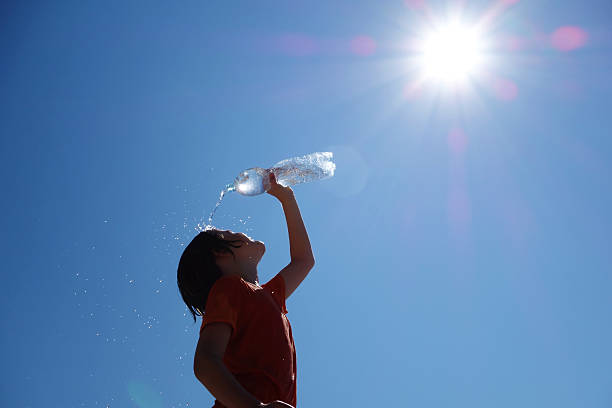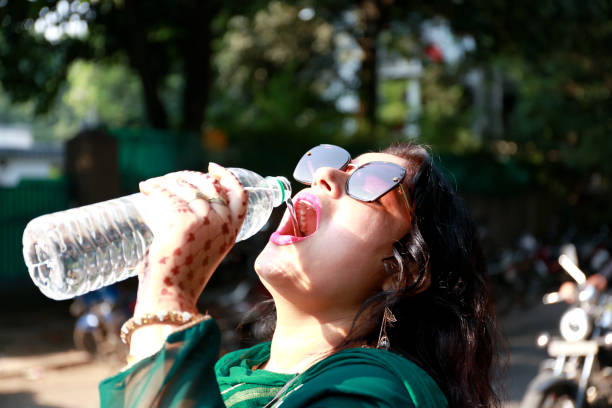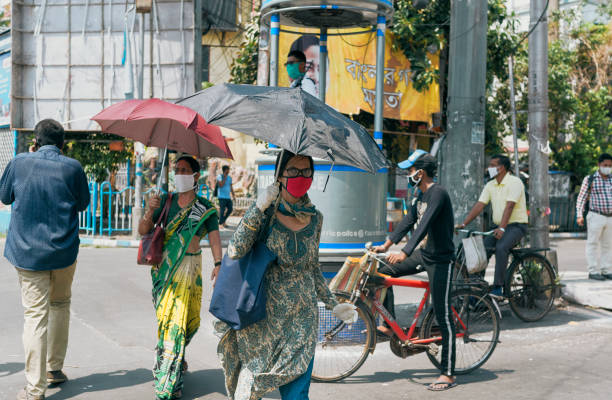Now that summer has arrived and the temperature is rising daily, there is a greater chance of heat stroke for people. The inability of the body to return to normal temperature following prolonged exposure to high heat is known as heatstroke. Heat waves are mostly brought on by prolonged exposure to high temperatures and physically demanding activity.
Everything appears to be going well until you have to stay indoors. It might be rather difficult to step outside on a steamy summer day. The heat and perspiration can quickly cause dehydration and fatigue.
Heat stroke is a serious medical condition that occurs when the body’s core temperature rises to dangerous levels, typically above 104°F (40°C). It is considered a medical emergency and requires immediate treatment to prevent serious complications or death. Heat stroke can occur when the body’s natural cooling mechanisms, such as sweating, are overwhelmed by high temperatures and humidity.
The following are signs of heat stroke:

1. High Body Temperature:
One of the hallmark symptoms of heat stroke is a core body temperature of 104°F (40°C) or higher. This elevated temperature can be measured using a thermometer. It’s important to note that heat stroke differs from heat exhaustion, which typically involves a less severe increase in body temperature.
2. Altered Mental State or Behaviour:
Heat stroke can cause confusion, disorientation, agitation, irritability, hallucinations, or even loss of consciousness. Changes in mental state or behaviour are common symptoms of heat stroke and require immediate medical attention.
3. Hot, Dry Skin:
Unlike heat exhaustion, where the skin is often moist and sweaty, the skin in heat stroke is typically hot, dry, and flushed. The body’s ability to sweat may be compromised, leading to a lack of perspiration and an inability to cool down.
4. Rapid Pulse:
Heat stroke can cause a rapid heartbeat (tachycardia) as the body attempts to cool itself down. The heart rate may be significantly elevated, and the pulse may feel strong or bounding.
5. Rapid Breathing:
Breathing may become rapid (hyperventilation) as the body tries to expel heat and cool down. Shallow or laboured breathing may also occur in severe cases of heat stroke.
6. Nausea and Vomiting:
Heat stroke can cause nausea, vomiting, and stomach cramps as the body struggles to regulate its temperature. Loss of appetite and gastrointestinal symptoms are common signs of heat stroke.
7. Headache:
Heat stroke can lead to severe headaches, dizziness, light-headedness, or throbbing sensations in the head. Headaches may be accompanied by feelings of weakness, fatigue, or malaise.
8. Seizures:
In some cases, heat stroke can trigger seizures or convulsions, particularly in individuals with pre-existing medical conditions or risk factors. Brain seizures are regarded as health crises that need to be treated right away.
9. Unconsciousness:
Heat stroke can cause loss of consciousness or fainting, especially if left untreated. Unconsciousness may occur suddenly and without warning, requiring prompt medical intervention.
10. Neurological Symptoms:
In severe cases of heat stroke, neurological symptoms such as confusion, delirium, seizures, or coma may develop. These symptoms indicate a life-threatening medical emergency and require immediate medical attention.
Here are some tips to help you stay cool and safe during heat waves:
- Stay Hydrated: Drink plenty of water throughout the day to stay hydrated, even if you are not feeling thirsty. Steer clear of sugar-filled or highly caffeine-rich drinks since they may cause drowsiness.
- Dress Appropriately: Wear lightweight, loose-fitting, light-colored clothing made from breathable fabrics such as cotton or linen. Avoid dark colours, as they absorb heat.
- Remain inside throughout peak time: Avoid going outside in the heat, which is usually around 10 in the morning and 4 o’clock in the afternoon.if you must be outside, seek shade or take frequent breaks in air-conditioned or shaded areas.

- Use Fans and Air-conditioning: to help cool your home or workplace. If you don’t have air conditioning, consider visiting public places with air conditioning, such as libraries, shopping malls, or community centres.
- Take cool Showers and Baths: to lower your body temperature and provide relief from the heat. You can also use damp towels or washcloths to cool off.
- Avoid Strenuous Activities: or exercise during extreme heat, especially outdoors. If you need to exercise, do so during cooler times of the day, such as early morning or late evening.
- Stay informed: about weather forecasts and heat advisories in your area. Follow any recommendations or warnings issued by local authorities and take appropriate precautions.
- Stay cool and take Breaks: listen to your body and take breaks when needed. If you start to feel overheated, dizzy, or unwell, move to a cooler environment and rest until you feel better.
By following these tips and taking proactive measures to stay cool and hydrated, you can protect yourself and your loved ones from the dangers of heat waves and beat the heat during hot weather.
If you suspect that someone is experiencing heat stroke, it’s essential to seek emergency medical help immediately. While waiting for medical assistance, move the person to a cooler environment, remove excess clothing, and try to cool them down using cold compresses, fans, or immersion in cool water if possible. Heat stroke is a preventable condition, and taking steps to stay hydrated, avoid prolonged exposure to high temperatures, and recognize the warning signs can help prevent its occurrence.



